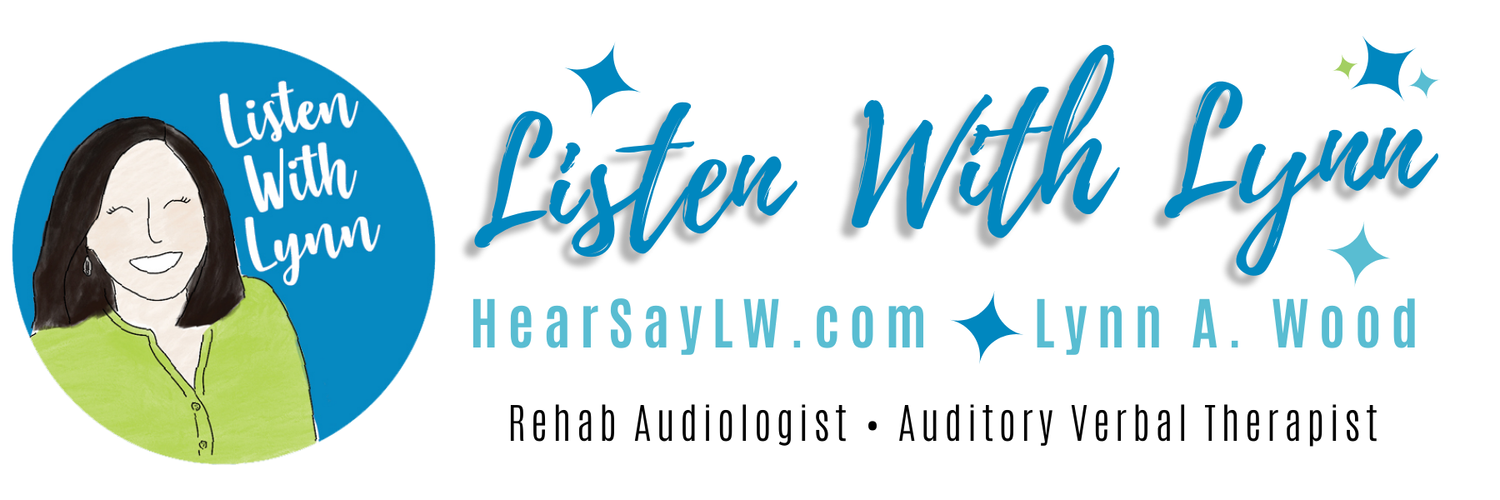The Little Orange House is a fun interactive story that makes a great listening activity to do with the kids near Halloween! Have them listen and follow along by cutting a piece of paper while you read the story! For school-age kids, I often set up the activity as a barrier game with the parent or a sibling. Parents can help preschoolers with the cutting but the little ones must listen and instruct the parent based on what they heard.
Read moreRoots of Language Develop in a Baby’s Brain Before They Can Talk!
I was recently asked to jump into a discussion as an SLP was beginning to work with a family of a 4-month-old who is being fit with a BAHA due to atresia. She asked for suggestions for strategies and where to begin. The first reply was to share music as a way to lay the foundation for listening and spoken language which I second. I jumped in and share that…
I believe modeling reading together with the baby is a powerful way to begin. I love the catchphrase - Read Early. Read Often. I explain that the roots of language are developing in a baby’s brain even before they can talk. Most parents have heard that reading to their child is important but few know exactly why. I like to say that the more words your baby hears over time, the more words they learn. This is simple but helps families connect the dots between reading early and listening and spoken language learning.
I intentionally say this in many different ways so parents are clear that reading together with their baby grows their brain for listening and talking. Each session, I suggest modeling reading and sharing a book while coaching the parents on strategies and also on choosing age-appropriate stories. Hearing First has abundant resources on reading aloud strategies to investigate, incorporate, and share with the parents.
To get started, a few of my favorite books are board books with simple, yet colorful realistic photographs or pictures. I am not a fan of the First 100 Words naming types of books or the only black and white images. Rather, I suggest books with rhythmic language and melody that repeats throughout the book. I love Nursery Rhyme books which contain traditional rhymes, songs, and poems that can be read while rocking or nursing. Some of my early favorites include
Brown Bear, Brown Bear, What do you see?” by Bill Martin Jr.
Goodnight Moon” by Margaret Wise Brown
Hand, Hand, Fingers, Thumb” by Al Perkins.
Moo, Baa, La La La! by Sandra Boynton
Peek a Boo Who by Nina Laden
Ten Little Fingers and Ten Little Toes by Mem Fox
Kitten’s First Full Moon by Kevin Henkes
Everywhere Babies by Susan Meyers
Pat The Bunny by Dorothy Kunhardt
Big Book of Nursery Rhymes by Miles Kelly
Auditory Verbal Adventures - New Release Children's e-Book
Auditory Verbal Adventures: Bo Bunny and Ooby Owl Meet Friends" is a children’s book written by Charlotte Caspari and Andrie Steen with a focus on listening and spoken language development. Charlotte is a certified listening and spoken language specialist, LSLS Cert. AVT and Andrie is a Special Education Specialist.
The Auditory Verbal Therapy (AVT) approach empowers parents of hearing-impaired children to stimulate their listening and spoken language development through play and day to day activities. Reading is an essential part of this.
This charming book is beautifully illustrated and includes many early learning to listen sounds and phrases which are used in Auditory Verbal Therapy(AVT) to help stimulate listening. Both parents and professionals working with children with hearing who are deaf and hard of hearing using spoken language will find it a helpful resource at home, school, in face to face and in teletherapy sessions.
A Halloween Mystery Bin - one LSL activity for all the kids on your caseload!
Listening, language, and learning with a Halloween mystery bin is a motivating activity for kids of all ages. I use a clear plastic container, dry pinto beans, and cover seasonal objects with a small swag of artificial autumn leaves to keep the item(s) hidden from view. Chose wisely items that can expand your child’s vocabulary. Acorns, leaves, and found items in nature and the dollar stores, Oriental Trading, and Target’s Dollar Spot have seasonal toys that are inexpensive and just right for a bin. Depending on the child’s goals this activity level can be leveled up or down. Increase or decrease the set size to meet the child's listening and language level.
Here are some ideas to try!
Ear contact before eye contact: Bury seasonal objects, cover with leaves and talk about the item before the child sees it. (Hearing First) Hide a ghost under the beans. Cue the child to listen. Say Boo, ooo-ooo. I hear a ghost. Boo, ooo-ooo. Uncover the ghost fly it around while saying Boo, ooo-ooo. Hand the ghost to the child and offer the opportunity for them to imitate the ghost.
Listening for descriptions: Hide a spider, a jack-o-lantern, and a few leaves. Ask the child to find an insect something with a face and what grows on trees.
Categories: Search for something that flies, is scary; seen in a pumpkin patch; is make-believe and so on.
Following directions/critical elements: Find the bat and make it sleep upside down. Put the straw has on the scarecrow.
Auditory memory: Look for the owl. Find the apple, the wagon, and the black cat. Uncover the skeleton, the witch but not the monster.
Auditory Comprehension and Sequencing: Tell a short story with the hidden items. Then, have the child find the objects and retell the story.
Inferences or Riddles: "I am the color of darkness. Witches keep me as their pet." Find it!
Let the child be the teacher: Give the child a turn to bury a toy and describe it to the other players.
Visit my Listen With Lynn store for more Halloween listening and language activities and games.





